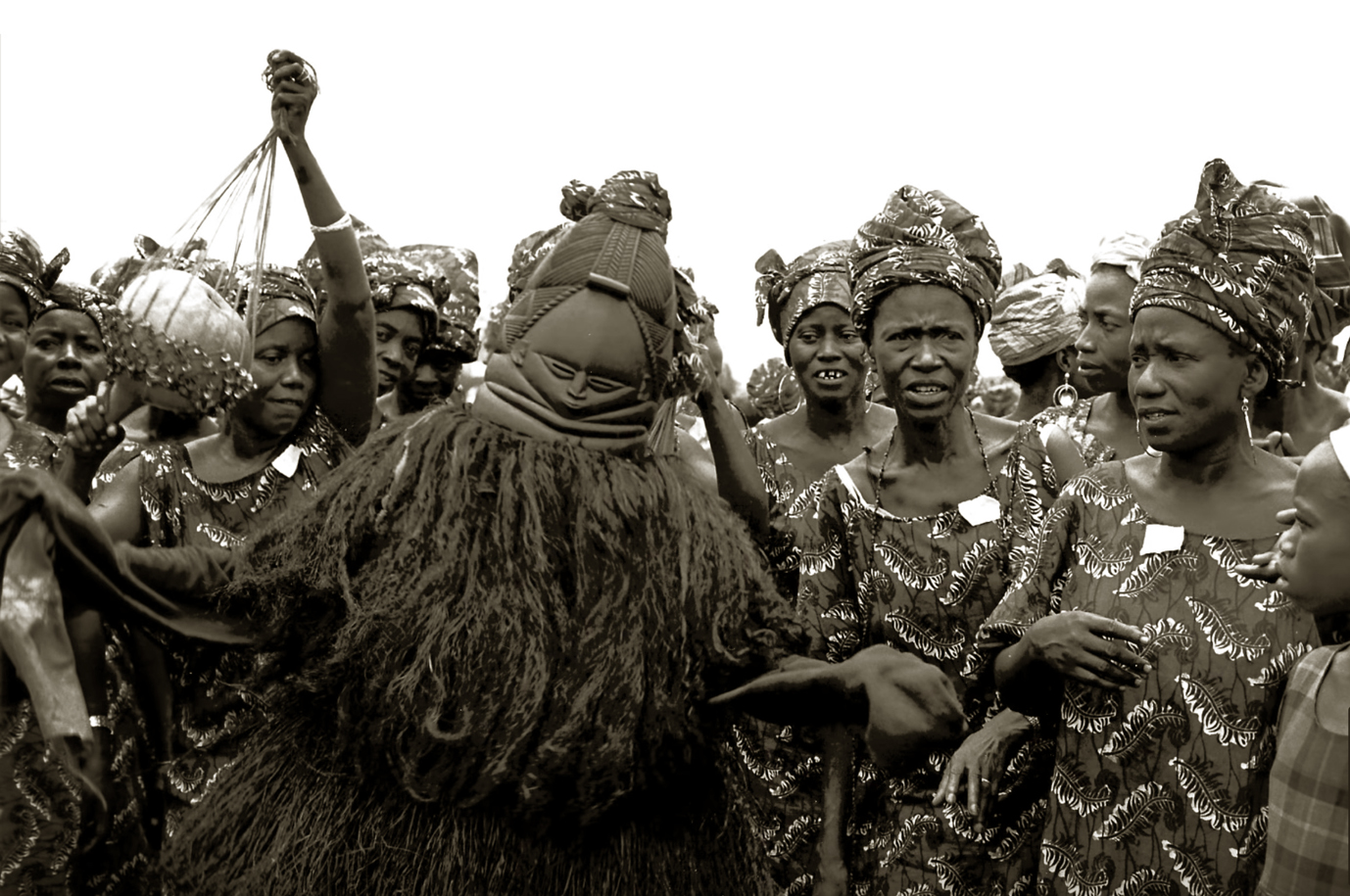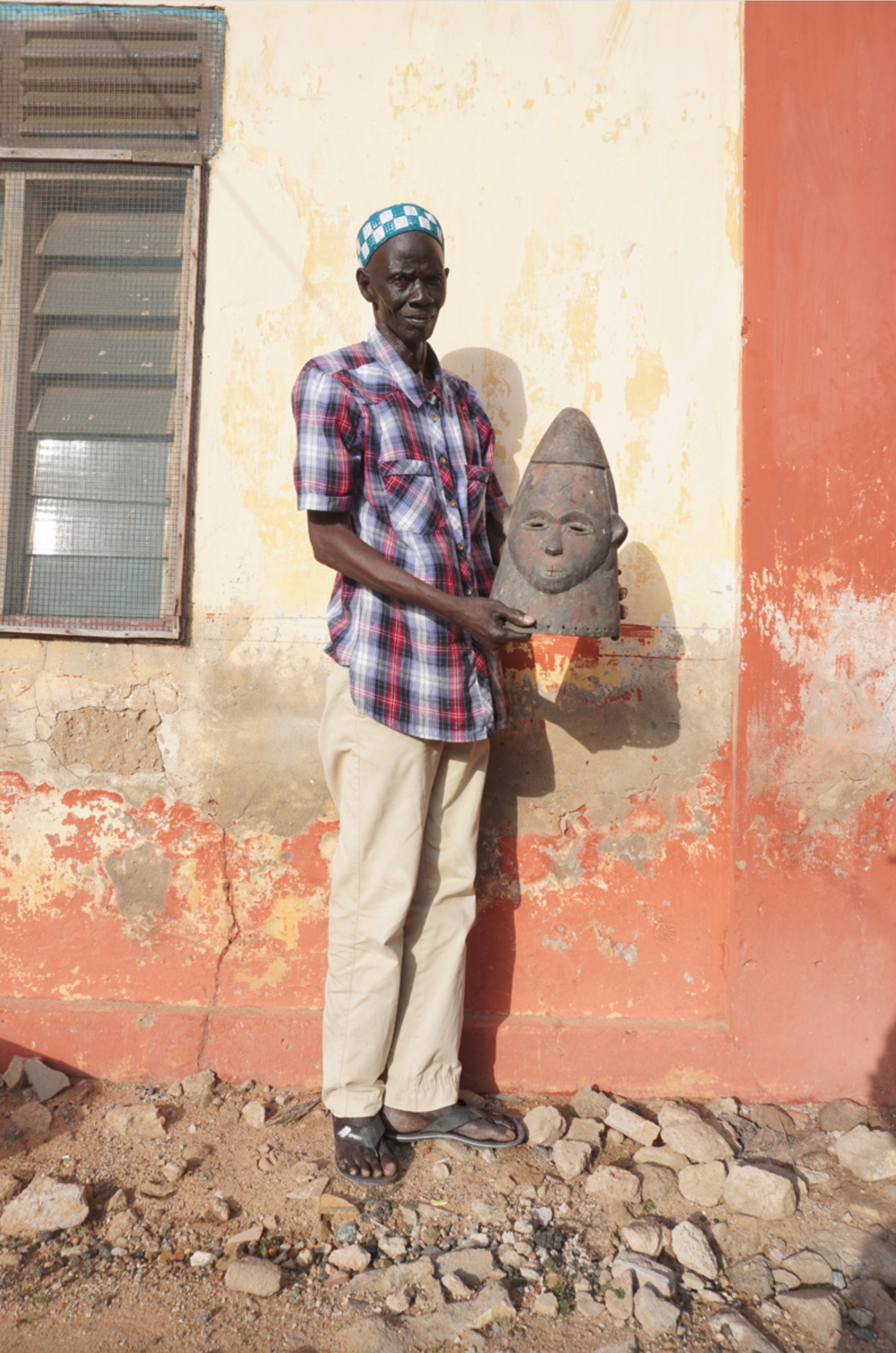wolfgang-jaenicke
A Mende helmet mask
A Mende helmet mask
Couldn't load pickup availability
A Mende helmet mask, Liberia. Signs of ritual use and age. Certificate of origin and provenance.
"A mask sometimes embodies ideals of physical and moral beauty or goodness. One of the very few types of masks worn by women in Africa, it accompanied young girls who had undergone initiation into the Sande association that prepared them for adulthood. The dyed raffia attached to the mask was part of a larger costume that would have entirely covered the dancer." Source: Minneapolis Institute of Art
The Mende initiation rite for young women is the only known masquerade tradition where the mask-wearers are female.
Sowei refers most specifically to medicine—the kind of medicine that female healers/herbalists utilize. Embodied in this idea of medicine is a spiritual force. The mask, when danced, is a visual expression of this spirit. The term also refers to the custodian of the medicine — a Sande official. S. Brooklyn Museum, smarthistory/bundu-sowei-helkmet.mask by Dr.Peri Klemm and Dr. Steven Zucker.
In sub-Saharan Africa only men are normally permitted on ritual occasions to wear wooden masks. This black helmet mask is worn exclusively by women. The practice of women wearing masks seems to have been brought to several populations of Sierra Leone and Liberia, such as the Temne, Gola and Vai, by the Mende and Mande-speaking people from the northern savanna. Because of the similarity of mask styles and the itinerant pathways of noted carvers, it is difficult to assign some masks to a particular ethnic group.

The Art dealer Sambou, Lomé, Togo, with a Bundu Helmet mask from Liberia
In the 19th century the Mende were organized into independent chiefdoms; families and individuals were ranked according to their land-use rights. Industrious rice farmers, the Mende number approximately two million people. The rituals of their women's society, called Sande, require the appearance of masked figures. Within such a large population there are many variations in local practices and carving styles, but there is broad agreement on the nature of the mask itself.
The mask presents an ideal of feminine beauty admired by the Mende: elaborate hairstyle, full forehead and small facial features. The gleaming surface signifies healthy, glowing skin. The swelling fleshy rolls alternating with deep incised lines at the neck or back of the head are considered marks of beauty and a promise of fecundity. The neck is broad to fit over the head of the woman who will wear it. Sande officials commission male carvers to produce the mask in secret. The surface is smoothed with the rough leaves of the ficus tree, then dyed black with a concoction made of leaves. Before use, it is anointed with palm oil to make it shine. (Modern carvers use black shoe polish.)
With this confining mask, the wearer (who has to be a good dancer and an official of the Sande) puts on a thick cotton costume covered with heavy fibre strands dyed black. Her dances may last for over two hours. The sacredness of the mask lies in its deeper meaning as a representation of the long deceased founder of Sande society. In pre-colonial times women could hold the position of chief of a village cluster; until the 1970s women politicians continued to use the Sande society to support and further their careers in modern government. With increasingly rigorous Islamisation, however, the Sande society is being seriously modified or even disbanded. Source: Roy Sieber in "African in Cycle of Life".
Height: 45 cm
Weight: 2,4 kg
























